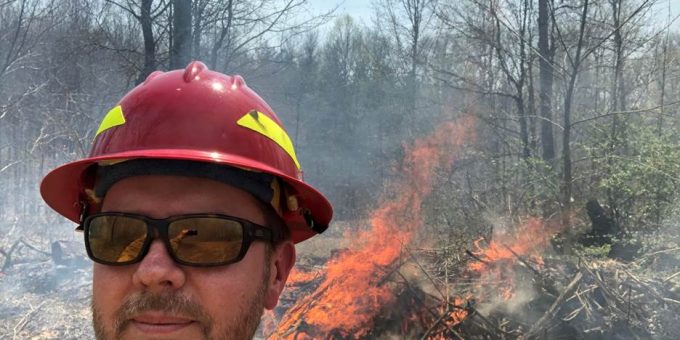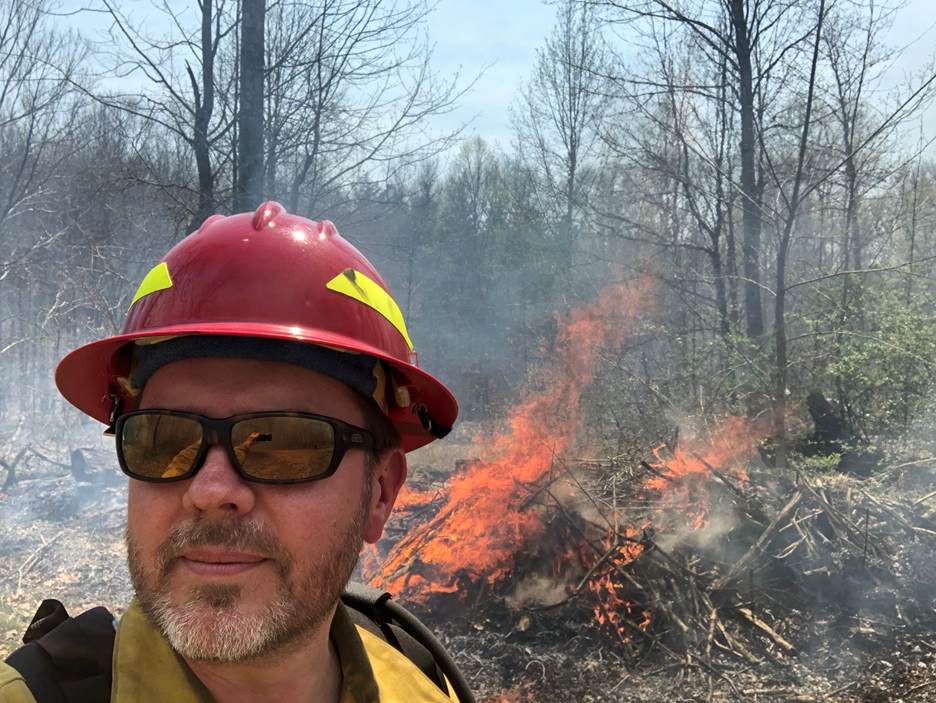
(BEDFORD) – Travis Swaim recently completed the USDA Forest Service’s National Advanced Silviculture Program (NASP) and earned his silviculture certification.

Swaim has a master’s degree in forestry and has worked as a professional
forester or forestry technician on several national forests for 10 years. He joined the Hoosier National Forest staff in 2018 but had previously begun the three-year process to become certified. Silviculture is the art and science of controlling the establishment, growth, composition, health, and quality of forests and woodlands. This is accomplished by applying different types of silvicultural treatments such as thinning, harvesting, planting, pruning, prescribed burning, and site preparation.
On the Hoosier National Forest, silvicultural prescriptions are utilized to meet the goals set forth in the Forest Land and Resource Management Plan of 2006, which strives to provide healthy and diverse ecosystems by maintaining or restoring natural ecological communities across the landscape.
To complete the NASP program, Swaim participated in four national core courses taught over a 9-week period, providing graduate-level instruction in silviculture and forest ecology. That was followed by a fifth regional module developed specifically for expertise in regional forest types.
The certification process included completion of a proposed silvicultural prescription, and presentation and defense of his project to a panel, which included two previously certified silviculturists, a research forester, and the forest supervisor. Panelists questioned Swaim on the proposed practices and methods in his forest prescription paper, including how the prescription would affect other resources such as wildlife, soil, and water.
On National Forest System lands, all vegetation activities, including prescribed fire, wildlife habitat improvement, timber harvesting, and cutting trees in campgrounds for human safety must have a silvicultural prescription. A silvicultural prescription is a document that has a planned series of treatments designed to change the current stand structure and composition of a stand to one that meets management goals. The prescription normally considers ecological, economic, and societal objectives and constraints. In the Forest Service, silvicultural prescriptions are prepared or reviewed by a certified silviculturist prior to implementing the project or treatment.
For more information on managing lands on national forests and grasslands visit https://www.fs.usda.gov/managing-land/national-forests-grasslands.



